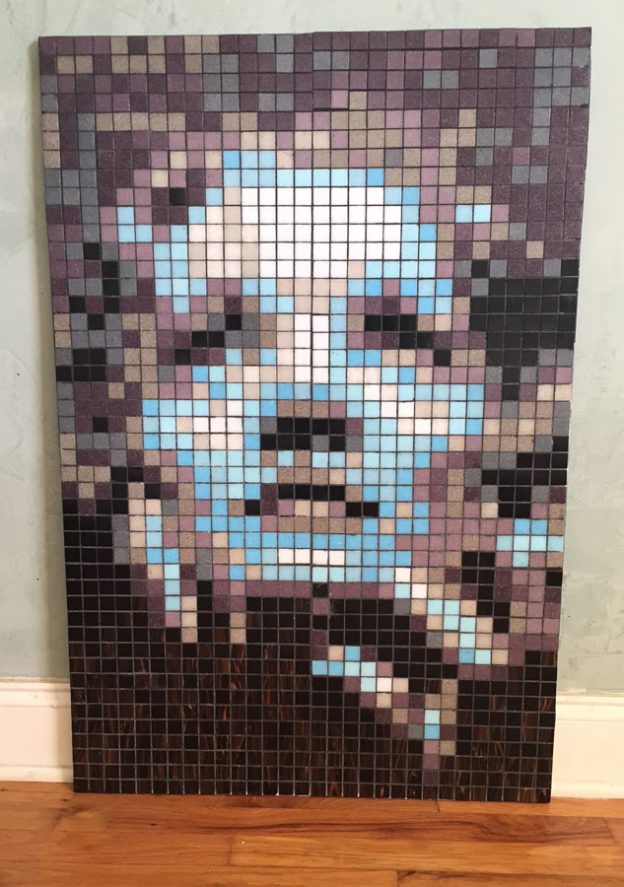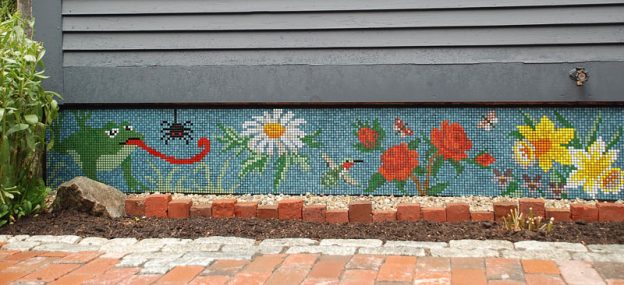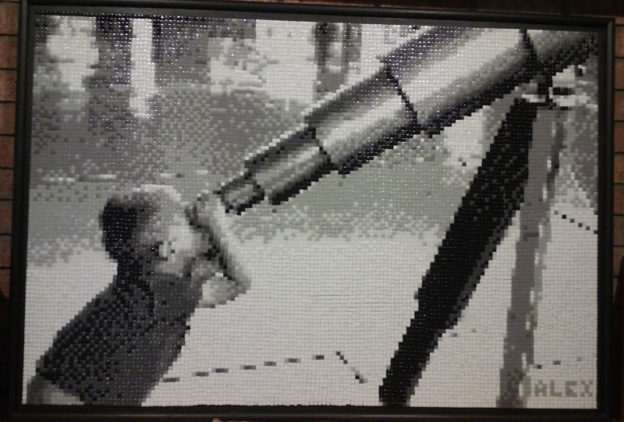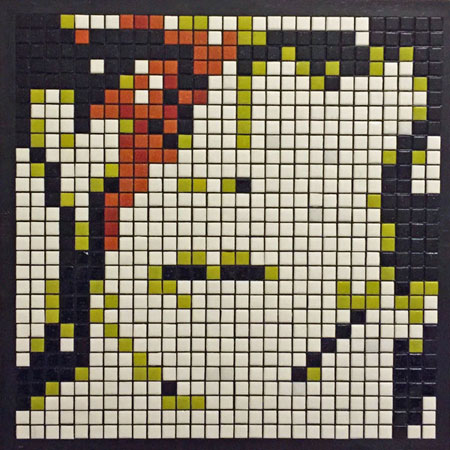Tag: pixelated mosaics
-

Inspiring Mosaic Portraits Using A Grid Pattern
David Armstrong has created some inspiring mosaic portraits, and he did it using whole tiles arranged in a grid instead of irregular pieces cut and fit as needed. Normally, I dislike mosaic designs based on grids because they lack the extra visual element provided by tile arrangement (andamento), but David’s work has tons of visual interest that more…
-

Patio Mosaic Alternatives
Patios are excellent locations for mosaics, but the patio floor itself is not as good a surface for a mosaic as a surrounding wall or brick planter would be. The main reason is simple: metal patio furniture will crack and crush glass tile, and glass is the preferred material because it is frost proof, economical, and comes…
-

Black and White Photorealistic Mosaic Art
Black and White Telescope Mosaic. Mark’s grandson gazes at the stars. Stylized or Photorealistic? Mosaic is usually used to make stylized images, meaning images that are simplified in certain ways, and that is done because the constraints of working with tile that only comes in certain colors and can only be cut so small forces the artist…
-

David Bowie, Springsteen, Strummer, Waits Mosaic Portraits
Fredrik Tigerstrom (“T29ART” on Instagram) has made some impressive mosaic portraits of rock icons David Bowie, Bruce Springsteen, Joe Strummer, and Tom Waits. These mosaics are worth sharing for several reasons, and not merely because they are faithful renderings of famous people. Yes, these mosaics are “accurate” in terms of capturing individual likeness, and that is an accomplishment…
